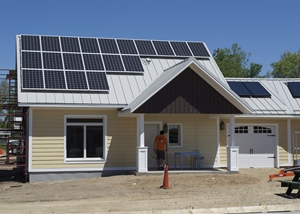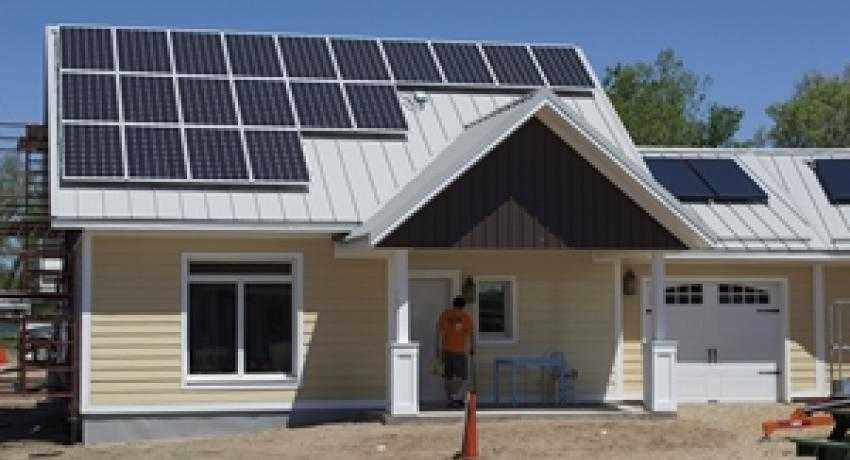Habitat for Humanity building a net-zero community with solar
 Wisconsin’s St. Croix Valley chapter of Habitat for Humanity's latest project could actually be called a “Habitat for All” project. The organization is building an “Eco Village” for low income families and individuals. The small village will have 18 net-zero energy community built homes with solar arrays and geothermal energy as well as a host of other sustainability features.
Wisconsin’s St. Croix Valley chapter of Habitat for Humanity's latest project could actually be called a “Habitat for All” project. The organization is building an “Eco Village” for low income families and individuals. The small village will have 18 net-zero energy community built homes with solar arrays and geothermal energy as well as a host of other sustainability features.
The organization started building the village last summer, working on six of the planned homes. “Four homes are done with four families moving in now, while the other 14 are currently being built,” said Matt Main of Andersen Windows, which donated $100,000 of high-efficiency windows to the project. He added that the project will follow Passive Haus standards and is designed to have zero-emission community transportation. In addition, the project will reduce the use of potable water by 50 percent by harvesting storm water for landscaping and gardening, he said.
“The Eco Village project that St. Croix Valley Habitat for Humanity and its community partners are pursuing represents a growing number of progressive and innovative community building projects within Habitat for Humanity,” said Larry Gluth, senior vice president for Habitat for Humanity International in US and Canada. “The project is an impressive model of sustainable community development that has the potential to greatly benefit families economically and socially.”
The organization and its partners, which include the City of River Falls, University of Wisconsin, Frisbie Architects, St. Croix Institute for Sustainable Community Development and others, chose to undertake the project as an Eco-Village after receiving a roughly 5-acre plot from River Falls. “We believe that we have a responsibility to our community and to our partner families to build houses that are eco-friendly, sustainable and that demonstrate sincere stewardship for our natural resources,” Habitat said. “The Eco-Village project will be one of the first sustainable neighborhood developments in the country to receive the LEED for Homes Platinum designations—recognized as one of the highest sustainability standards in the building industry.”
The group chose to make the homes in the village net-zero energy for a number of reasons. Among them were to help give lower income people and families access to sustainable homes. In addition to the 18 homes, the project will have a community center, and will feature community produce gardens and edible landscapes. To make sure the neighborhood’s transportation is also net-zero energy, community designers envisioned a fleet of shared electric vehicles for the neighborhood, which could be charged with renewable energy produced by the village. Habitat for Humanity projects around the world are also using solar to make the homes they build the best for their inhabitants. For instance, in tsunami region of Japan, that chapter of habitat is rebuilding new homes with solar, as is California's Habitat for Humanity chapter.




